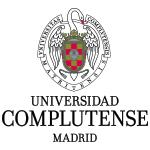Isolation of Enterococcus hirae from suckling rabbits with diarrhoea
Artículo de investigación publicado en The Veterinary Record
28 de agosto de 2010
Enterococci are commensal microorganisms of the intestinal tract of human beings and animals, and can also be found in a wide range of environments (Klein 2003, Donskey 2004). Enterococci were considered to be non-pathogenic for many years, but several species, most notably Enterococcus faecium and Enterococcus faecalis, have emerged as human pathogens, and are currently considered to be among the most important nosocomial pathogens (Murray and Weinstock 1999). Enterococci are also responsible for causing various diseases in a number of animal species (Rogers and others 1992, Cheon and Chae 1996, Chanter 1997, Vancanneyt and others 2001). In particular, Enterococcus hirae has been associated with endocarditis in broilers (McNamee and King 1996), septicaemia in broilers and psittacine birds (Devriese and others 1992, Chadfield and others 2005), brain necrosis in chicks (Devriese and others 1991), enteropathy in cats (Elsinghorst 2003) and diarrhoea in suckling rats and kittens (Etheridge and others 1988, Lapointe and others 2000). This short communication describes the isolation of E hirae from suckling rabbits with diarrhoea
Vela AI., Fernandez A., Moreno B., Casamayor A., Chacon G., Villa A., Comenge J. y Fernandez-Garayzabal JF..
 | Servicio de Identificación y Caracterización Microbiana (ICM). Centro de Vigilancia Sanitaria Veterinaria (VISAVET). Universidad Complutense (UCM). |
 | Departamento de Sanidad Animal. Facultad de Veterinaria. Universidad Complutense (UCM). |
| Laboratorio Exopol. | |
| Nanta, S.A. | |

